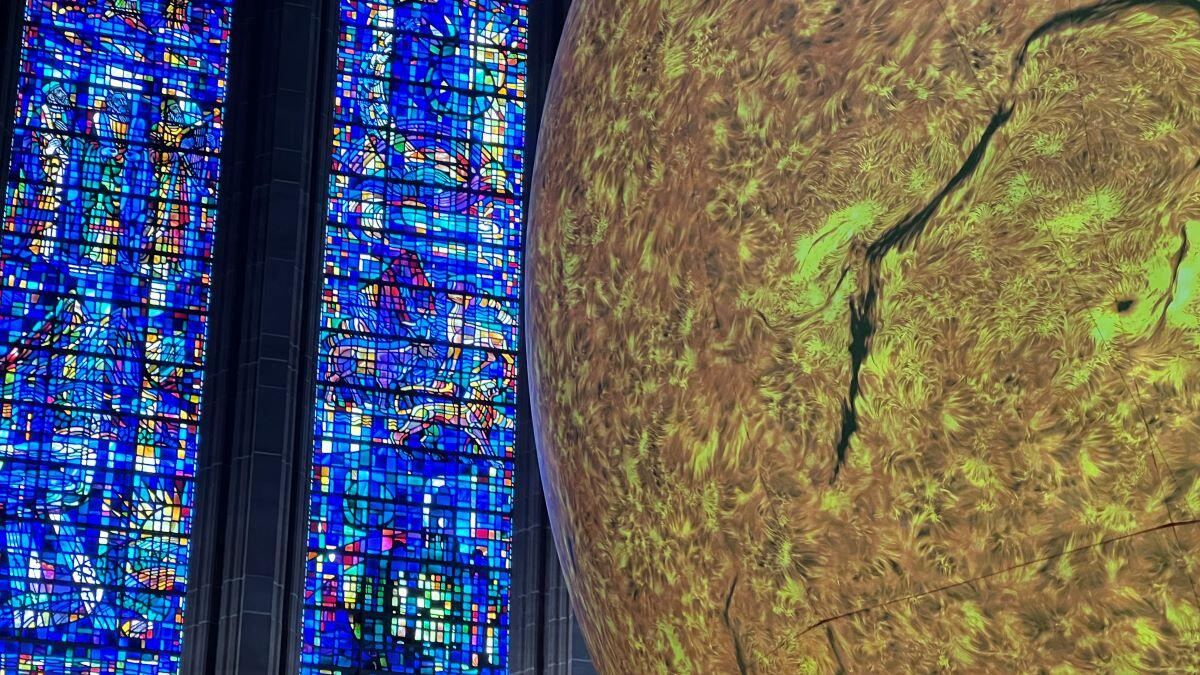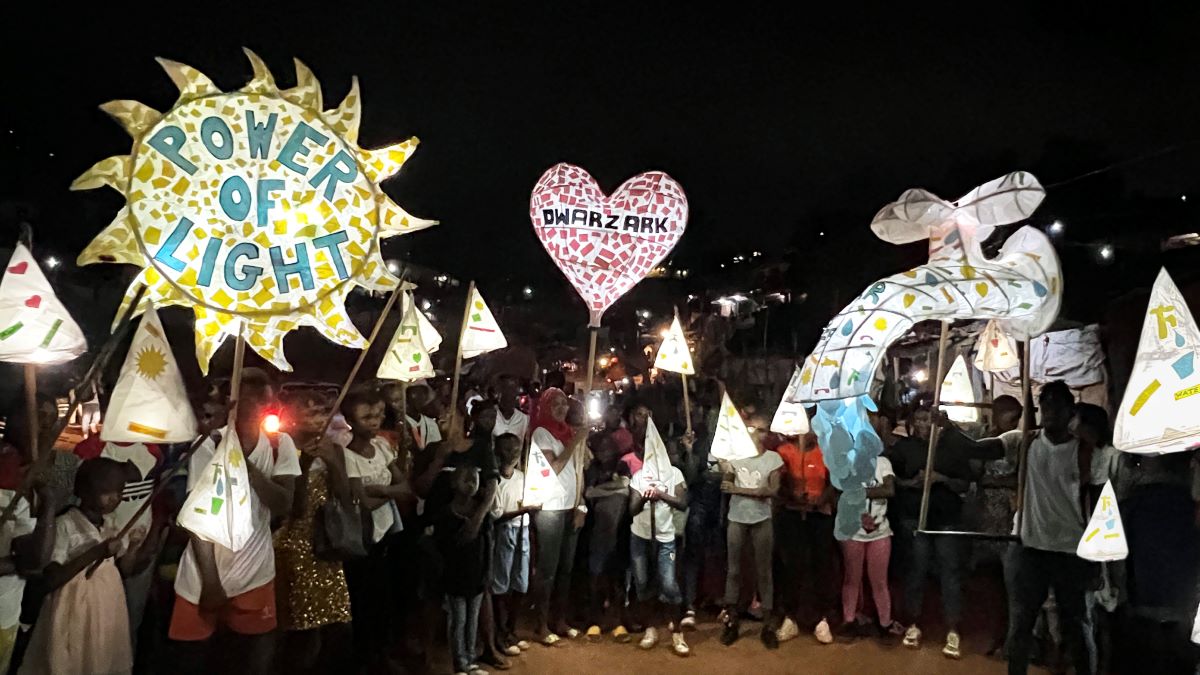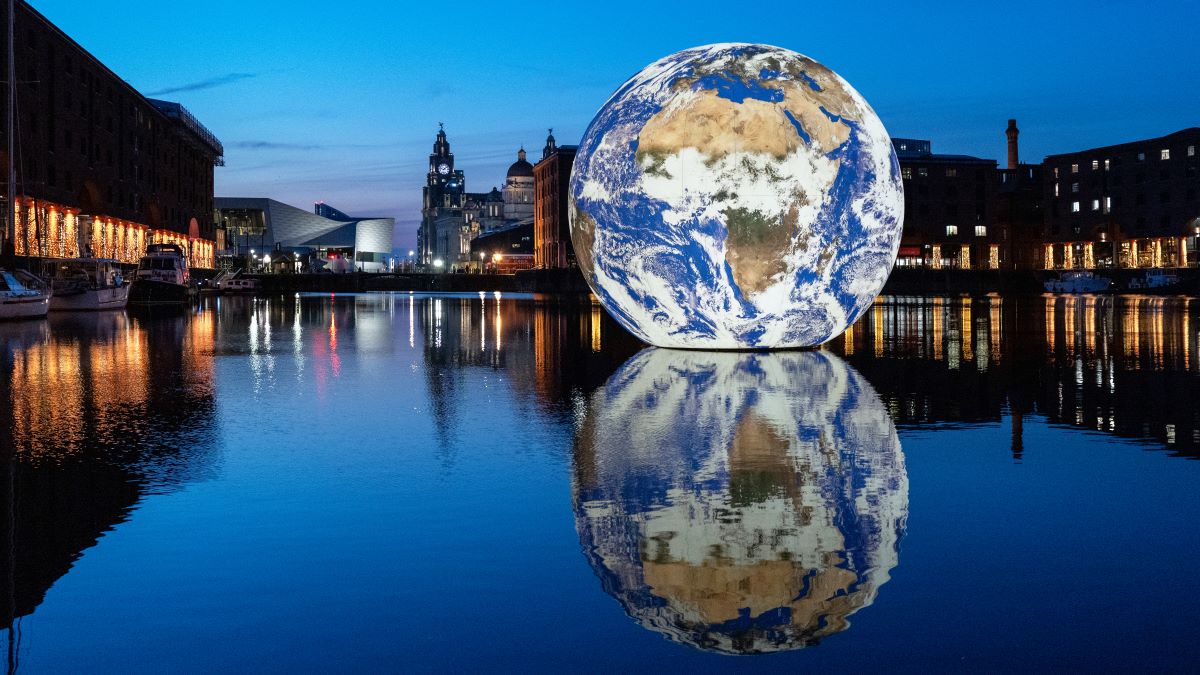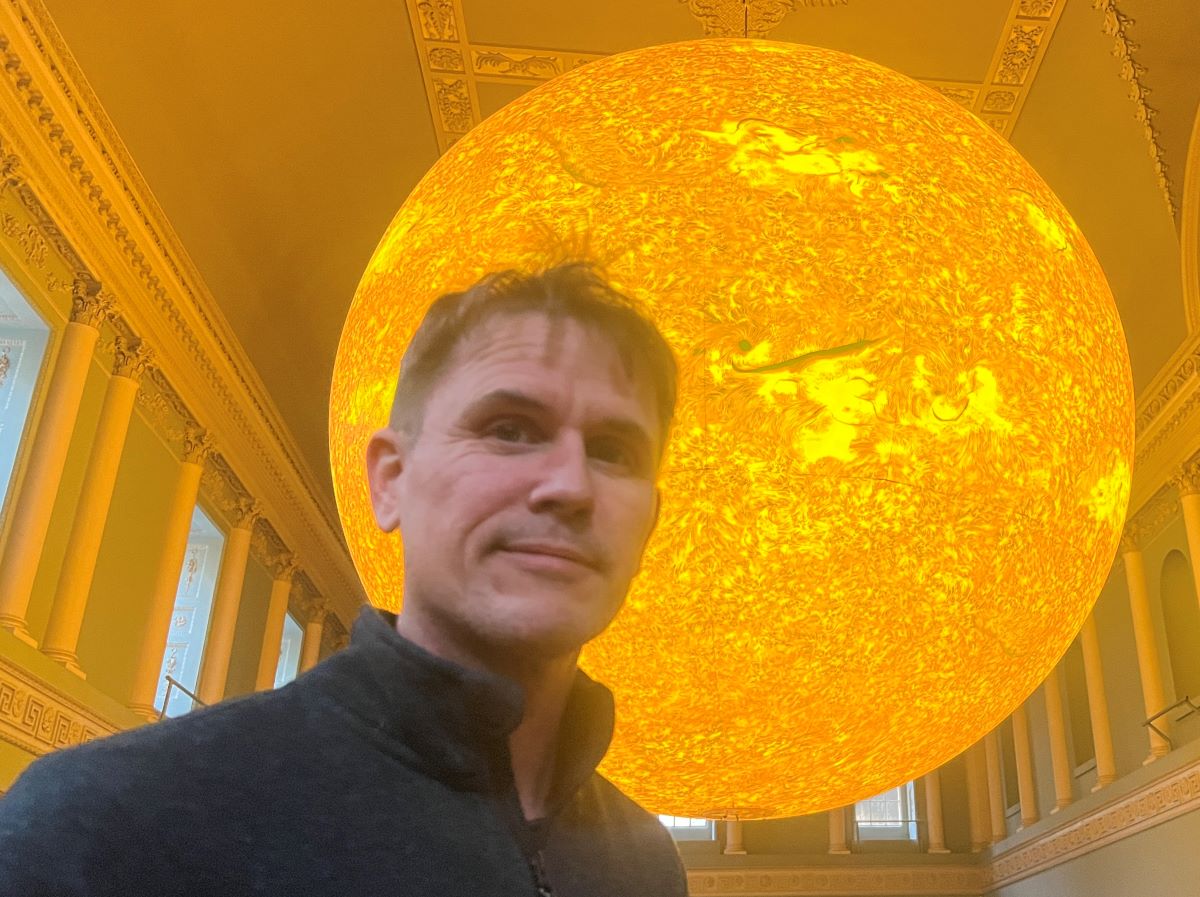
Luke Jerram’s monumental celestial sculptures have attracted hundreds of thousands of art lovers to Liverpool Cathedral in recent years, and his latest giant sun exhibit Helios is set to continue the trend.
While his affinity to Liverpool is well known – especially so after his Gaia Earth sculpture returned to the Royal Albert Docks as part of the Eurovision celebrations and his permanent artwork Tribute resides in the Royal Liverpool University Hospital – what’s less appreciated is Jerram’s close involvement with Liverpool School of Tropical Medicine’s research.
Jerram’s new book Of Earth and Sky, which was launched at a special event in Liverpool Cathedral this week, details his hugely popular works dating back to 2019, culminating in Helios’ awe-inspiring seven metre sculpture of the sun. Yet the book also focuses on his hugely influential recent creative collaborations, including with LSTM’s ARISE consortium.

ARISE was an LSTM-led project designed to address and improve the health and wellbeing of marginalised populations living in informal urban settlements in low- and middle-income countries.
Jerram joined social scientists from LSTM and partners in three countries to explore how art can engage communities to express their concerns, hopes and dreams and co-create innovate solutions for action. Through Community-Based Participatory Research, ARISE collaborated with research institutions and local residents to understand and address the challenges they face.
This culminated in the Power of Light in Sierra Leone, where Jerram worked with ARISE partners and local communities to identify and tackle the problem of blackouts and poor street lighting leading to people feeling unsafe. Working with communities and local artists, solar-powered street lights were installed, and a local carnival was held to switch them on. The small lights from the home-made lanterns were given to local midwifes and children for safer navigation at night,
In Dhaka, Bangladesh, Jerram worked with ARISE partners and communities to regenerate a community centre, create a community garden and exhibition. In Nepal, he worked with ARISE partners and a local women’s group from the informal settlements in Pokhara, to co-create art reflecting challenges like caste discrimination and limited employment opportunities
Speaking to LSTM ahead of his book launch in Liverpool, Jerram said: “I've been working as an artist for 28 years, so I've had about 900 exhibitions now and I've worked with all sorts of institutions and organisations all around the world, and I'm often collaborating with scientists to help communicate their research.
“But this was the first project, I suppose, where we were delivering a creative project that was designed specifically to physically help a community in a practical way. So this wasn't just about science, communication or art. This was actually about delivering a project that was going to bring fundamental change that benefits the community.”
He said: “I've really enjoyed working with the team. They’ve been absolutely brilliant and I really love the way that they’re not sort of imposing their will on a local community that might be quite vulnerable in Sierra Leone, for instance, or in Nepal or in India, but that they're working very collaboratively with those communities and doing research and empowering local people to help change things.”
Following this collaboration and the phenomenal international success of his recent work, he has established the Jerram Foundation to help to fund more creative-led community initiatives. This further supported projects through the ARISE consortium, including extending a community building, creating a community kitchen and purchasing sports and play equipment for a school.

He said: “I think given me a new purpose in my career as an artist, by doing these more of these charitable creative projects that really make a difference to people's lives.”
Professor Sally Theobald from LSTM and lead on ARISE, wrote a foreword to Jerram’s new book. In it, she wrote: “Thank you, Luke, for your partnership, your solidarity, your gifts of creativity, of thinking outside of the box and problem solving, of listening, of building trusting relationships with diverse people quickly and with humility. We have all learnt and gained from these participatory art projects that bring beauty and dignity.”
Jerram is excited to bring his new work Helios to Liverpool – the city that first inspired him to become an artist.
“I first came to Liverpool when I was about 16 years old and I visited the Tate. It was the first time I ever went to a proper contemporary art museum. It was amazing, and it blew my mind a little bit. I still remember that exhibition and it helped to make my mind up to go and study art.

“I've been coming back every few years ever since, and every time I come back, the city seems to have changed.
“When we first presented the moon in the cathedral, I think 60,000 people came in 10 days to see the artwork and then a few years later, we presented the Earth in the cathedral and 200,000 people came in about three weeks.
“I seem to have a really nice working relationship with Liverpool and I think that [people in Liverpool] get culture and they understand public art and the value that it can bring to the people of the city. There’s a like-mindedness in our approach in how we think about the value of art and how it can animate and be of value to a society.”